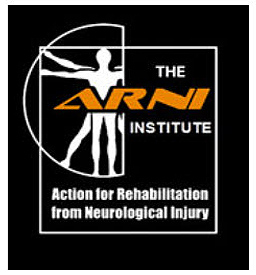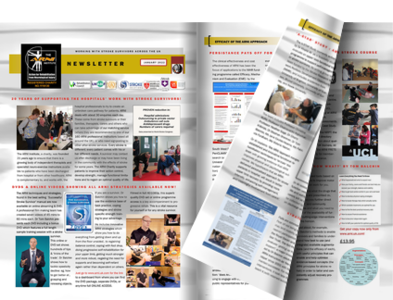News
Contact ARNI for Home Based Rehab with a Qualified Instructor
We are on Facebook
A high street eye scan may help predict someone’s risk of stroke or heart attack up to 10 years in advance, new research shows. The £20 scan uses artificial intelligence to analyse images of the back of the eye and spot signs linked to cardiovascular disease.
Retinal imaging, which takes less than a minute, can detect blood vessel damage or narrowing that may indicate similar problems elsewhere in the body.
Researchers at the University of Dundee ran existing eye scans from 1,200 people with diabetes through AI software.
In 70 per cent of cases, it correctly identified early warning signs in those who went on to have a major heart problem within a decade.
Dr Ify Mordi, a cardiologist and British Heart Foundation research fellow, said: “This is a one-stop scan which is routinely performed and takes less than a minute.
If there is damage or narrowing of the blood vessels at the back of the eye, there is a good chance that that will also be seen further inside the body.
“The eyes are a window to the heart.”
The scans are widely available at high street opticians and are also offered on the NHS for some patients.
Results could be used to refer people who may not know they are at risk to a doctor for preventative treatment.
Professor Bryan Williams, chief medical officer at the British Heart Foundation, said: “The more accurately we can detect someone’s risk of a heart attack or stroke, the better the opportunities to prevent them happening.
Cutting-edge innovations like this could play a role in improving risk prediction.”
www.arni.uk.com
#exerciseafterstroke #strokerehabilitation #strokeexercise #neurorehabilitation #neuroplasticity #neurorehab #strokerecoveryexercises #exercisestroke #strokerehab #strokerecoverylife
... See MoreSee Less

The more nominations a charity gets, the better their chances of being drawn, so once you’ve nominated please share with your network.
www.arni.uk.com
#strokeexercise #exerciseafterstroke #neurorehabilitation #neuroplasticity #strokerecovery #neurorehab #exercisestroke #strokerecoveryexercises #strokerehabilitation
... See MoreSee Less

Nominate a charity - Movement for Good
movementforgood.com
Nominate a charity for a Movement for Good award now.Please nominate ARNI! Tom
ATTENTION; 'ARNI Institute' is changing it's name to 'ARNI Stroke Rehab UK' ... See MoreSee Less

Exactly so, Ros - it'll help SEO and make it easier for donors to understand what we're about 😉 Hope yourself, Jonathan and Harry are well? 😉 Tom
It is a shame you cannot help people in Scotland. No help within 50 or more miles from fife
Great idea …more explicit re its purpose etc… but keeping the ARNI brand
If you have upper limb difficulties, this is the video that will be your ally. Here, Dr Tom shows you how you, too, can get as excellent function back in your upper limb as he has. He shows you what he did to gain function and shows tools that he has built to help survivors train their reach, grasp and release. He then shows you exactly how to make or acquire what you need to do what many hundreds of people have used to significantly (and very quickly) to reduce spasticity and flaccidity – and to gain control again of your more-affected hand.
Available via online streaming means you don't have to wait to get started!
Get your copy today by clicking on the link at the bottom of this pos#strokerecoveryo#strokerehabilitationa#neuroplasticityi#StrokeRehabr#exerciseafterstroket#strokeexerciser#strokerecoveryexercisesc#neurorehabr#neurorehabilitationa#exercisestroketroke
www.strokesolutions.co.uk/product/successful-stroke-survivor-dvd-volume-6/
... See MoreSee Less

Task-related practice is the ‘number one’ way to retrain the brain. It means simply to train the action to be performed in a natural environment. For example, if you wanted to lift a mug and drink from it, you should take a mug and practice lifting and drinking from it, over and over again … and attempt to improve progressively and consistently.
www.arni.uk.com
#exerciseafterstroke #strokerehabilitation #strokeexercise #neurorehabilitation #neuroplasticity #neurorehab #strokerecoveryexercises #exercisestroke #strokerehab #strokerecovery
... See MoreSee Less

Just walking!
Do what you can. It’s amazing the amount of people who we see coming to training who have been left by therapists in an adequate state, yet who have simply regressed when left to their own devices. Many are wheeled about in wheelchairs when there is no reason for these devices to be used except to save time when getting from A to B. I understand completely how this happens, and have great sympathy. As we have said, life is to be lived. The problem is that paradoxically you will probably end up living less in real terms! The struggle to walk counts. Each step counts. (You know this already though.)
From The Successful Stroke Survivor book by Tom Balchin
www.arni.uk.com
#neurorehabilitation #strokerehab #exerciseafterstroke #strokeexercise #strokerecovery #strokerehabilitation #arnistrokerehab #strokerecoveryexercises #neuroplasticity #neurorehab
... See MoreSee Less

Couldn't agree more, luckily my walking stick broke in April which have me the opportunity to walk without it - haven't looked back since. I'm now up to slow jogging.
My husband got me out of wheelchair early days and doesn’t let me use it unless it’s a long distance to travel. He says he could easily get me an electric chair and leave me to it but it’s not helping me it’s tough love in My eyes but he is right . He would totally agree with you . I just need to get rid of my stick now which I’m working on with my ARNI instructors in Glyn Neath in wales
Often stroke survivors, even very young ones, report using a stick to highlight to the public that they are currently disabled and to ensure that they never fall over.
This is sound thinking. But in the case of one-sided weakness, less weight is placed through the affected leg as the stick is held in the good hand. Accordingly, ability to balance properly and walk again without a stick can suffer the longer you use one to help you get about. This is not a license for you to get rid of your stick immediately, if you are using one. But it is a suggestion, please, to try and minimise its use perhaps to situations outside of the house.
If you feel you need some help with y our walking call us on 0203 053 0111 or email support@arni.uk.com
We have trainers throughout the country who can help you with your recovery.
... See MoreSee Less

Agree it helps people know. But also agree I use my weak side more when I don't use. I mix & match depending on how I'm feeling &tired I am
I find carrying a walking pole with me should I require it helps. Most of the time I don’t need it but I have it with me. it can fold up and be carried in a shopping bag
Upper body movement is all about recovery of reaching (which you perform mainly with your shoulder and elbow joints) and grasping/releasing (which you do mainly with your wrist, finger and thumb joints).
Call us on 0203 053 0111 if you want to find out if there's a trainer near you who can help with your recovery; or email support@arni.uk.com
www.arni.uk#neuroplasticityi#strokerecoveryo#strokerehabilitationa#ARNIstrokerehabr#arnistroket#neurorehabr#strokeexerciser#arnistrokecharityar#neuroplasticityi#strokerecoveryo#strokerehabilitationa#ARNIstrokerehabr#arnistroket#neurorehabr#strokeexerciser#arnistrokecharityar#arnistrokerehabarnistrokerehabrehab
... See MoreSee Less

This is quite an alarming finding; for the first time, the cognitive decline rate after a mini stroke has been found to be the same as a full stroke.
Mini strokes, as you know, are events during which a brain region is temporarily deprived of oxygen, most often for only few minutes, and are without a lesion on brain MRI scans.
.Researchers at the University of Alabama at Birmingham evaluated TIAs’ effect on cognitive function and found a correlation between TIAs and future cognitive decline. While TIA participants were less impaired than stroke participants, results showed the two groups have the same rate of cognitive decline after their cerebrovascular event. Results have just been published in JAMA Neurology.
Mini strokes are often viewed as relatively benign cognitive events that have minimal impact on long-term health besides an increased risk of a full stroke, This study suggests that TIAs are important medical events that affect long-term cognitive outcomes.
Previous research showed reduced cognitive function following a TIA. However, the studies did not have measurements of cognition before the TIA, and additional vascular risk factors were not adjusted or excluded. In the absence of the pre-TIA cognitive baseline, this created uncertainty about whether cognitive decline after the TIA was related to the actual TIA event.
"Clinically, TIA patients should be carefully evaluated for physical and cognitive changes at the time of the event and evaluated over time for potential cognitive decline,” Del Bene said. “Future research should also focus on the mechanisms by which a TIA and causes cognitive decline. Ultimately, it could broaden how we define stroke, which would change established clinical and research guidelines.”
Hence the real importance of knowing the signs of strokes and TIA, such as FAST. As soon as symptoms appear, even if temporary, call the emergency service. A TIA is often associated with a larger stroke within 30 days, especially the first 72 hours. Earlier intervention improves the likelihood of preserving brain function and reducing long-term disability.
Del Bene VA, Howard G, Gropen TI, et al. Cognitive Decline After First-Time Transient Ischemic Attack. JAMA Neurol. 2025;82(4):323–332. doi:10.1001/jamaneurol.2024.5082
jamanetwork.com/journals/jamaneurology/article-abstract/2830012
www.arni.uk.com
#arnistroke #strokeexercise #neurorehab #arnistrokerehab #neuroplasticity #strokerecovery #arnistrokecharity #strokerehabilitation #ARNIstrokerehab
... See MoreSee Less


